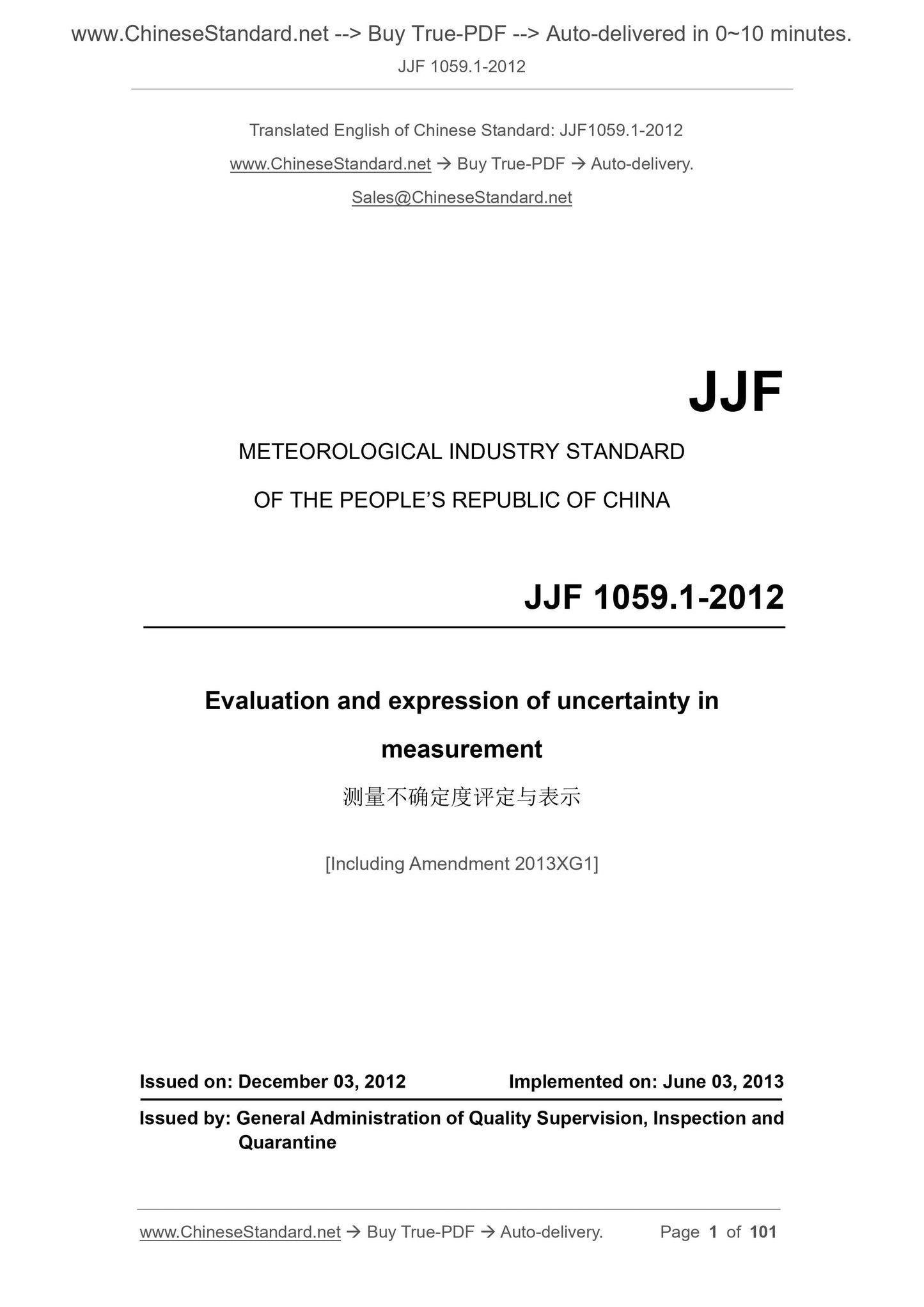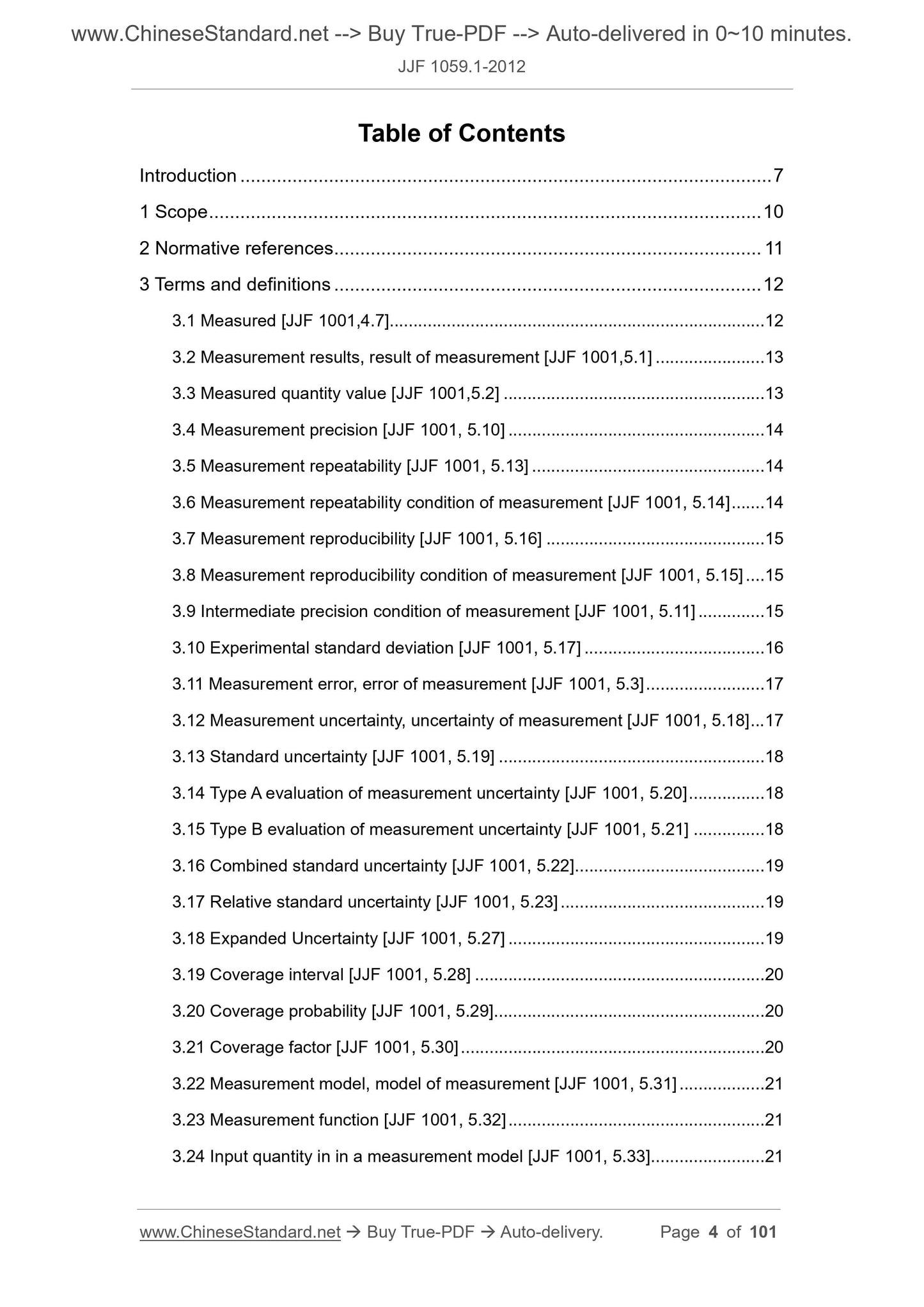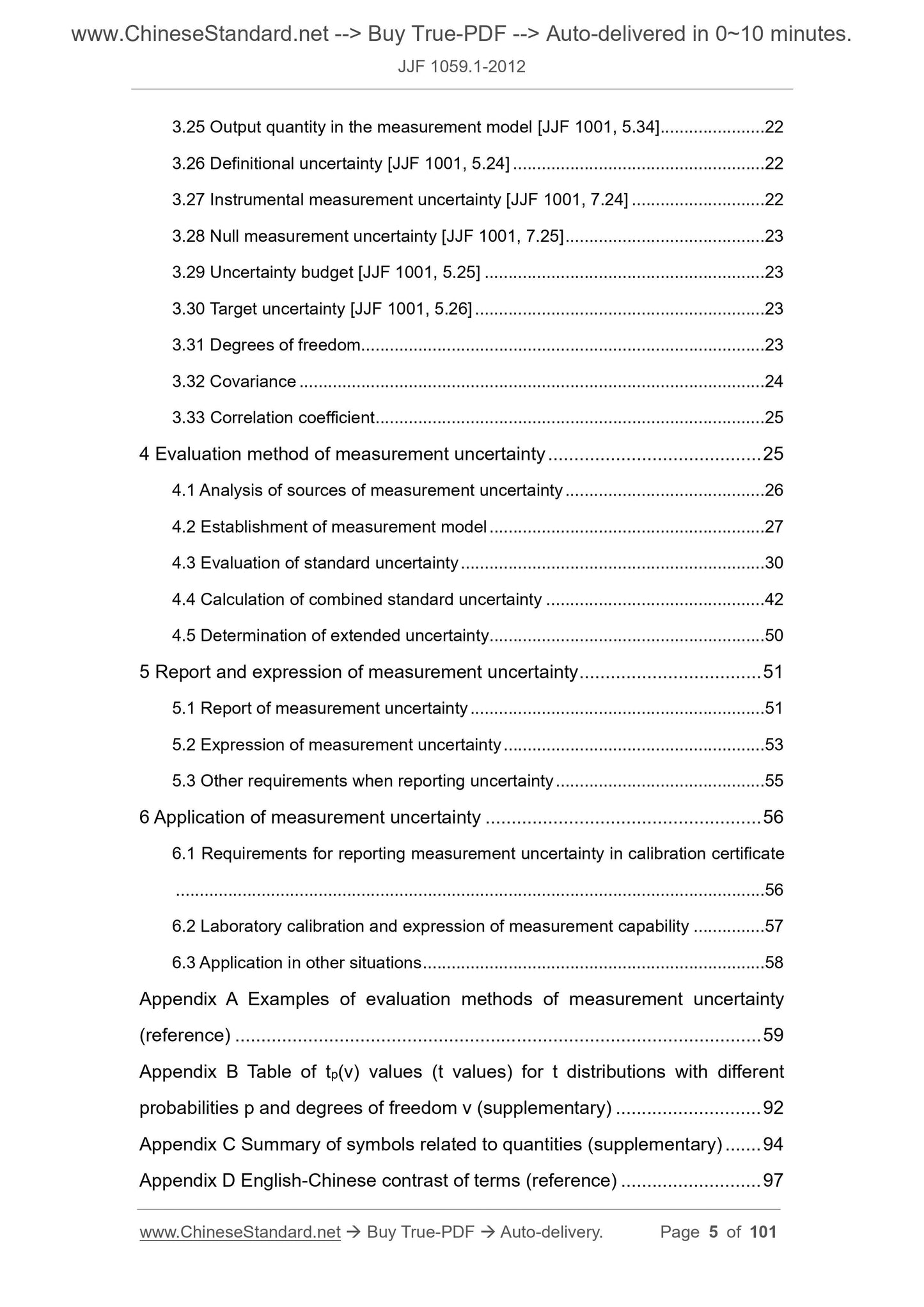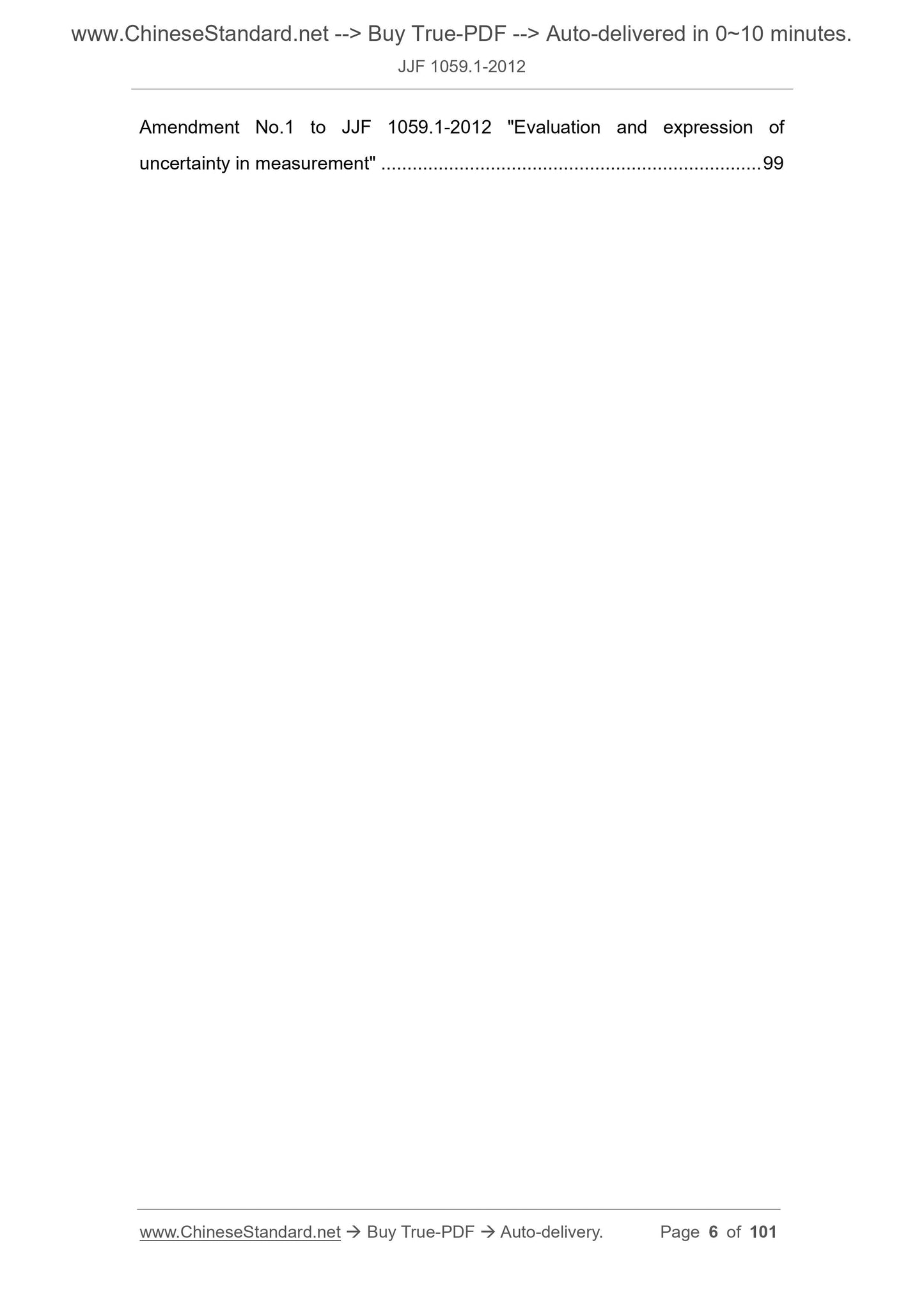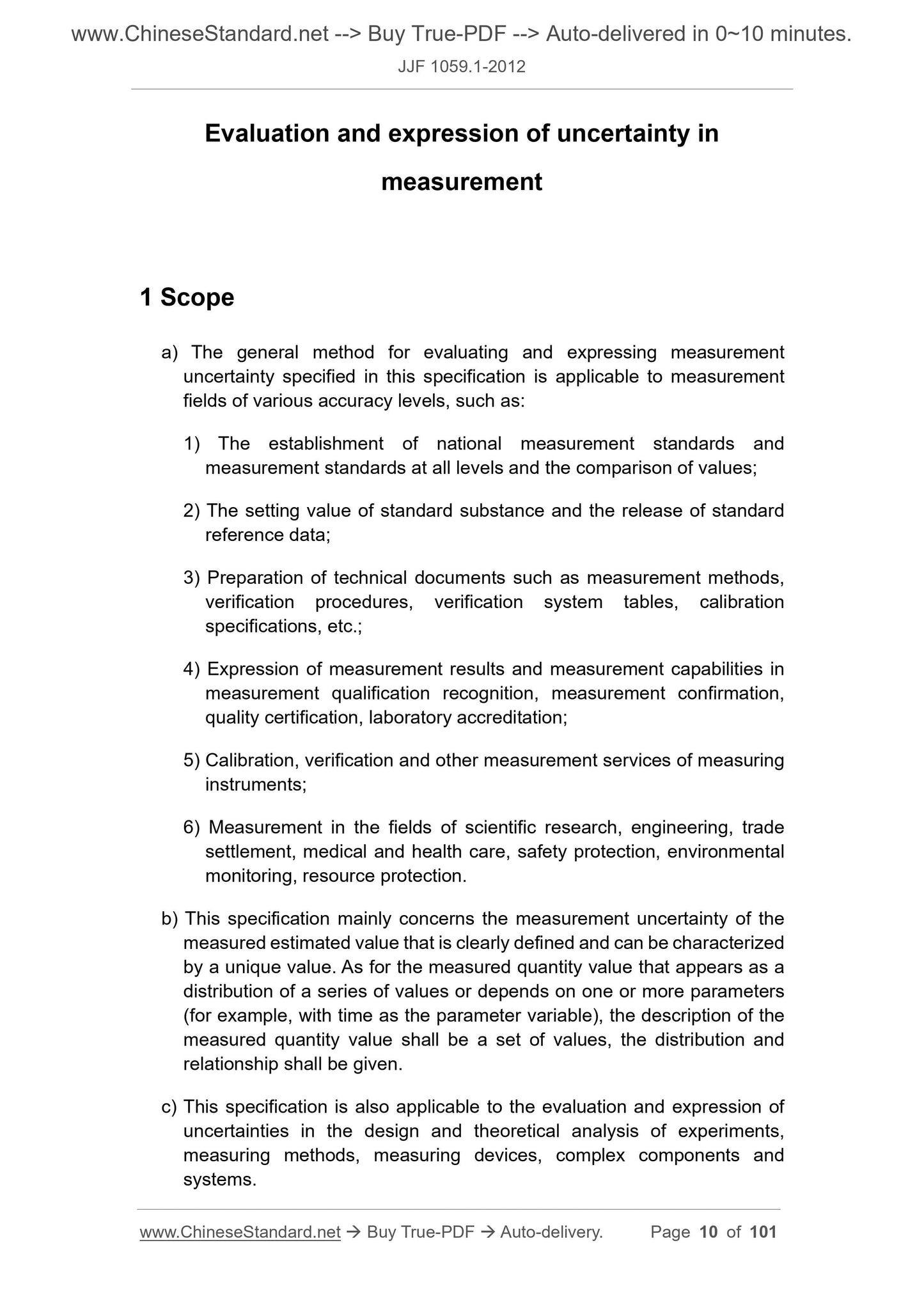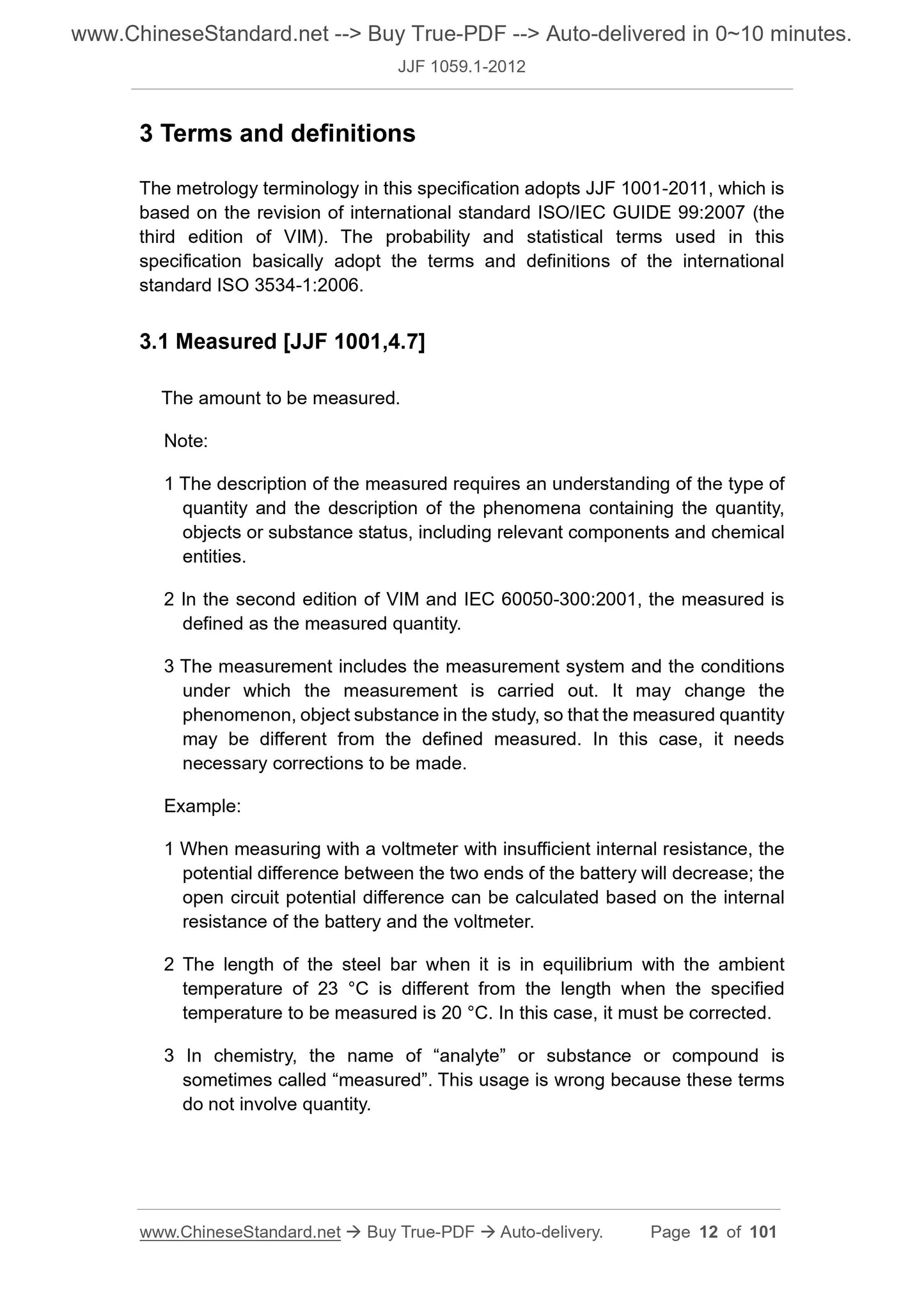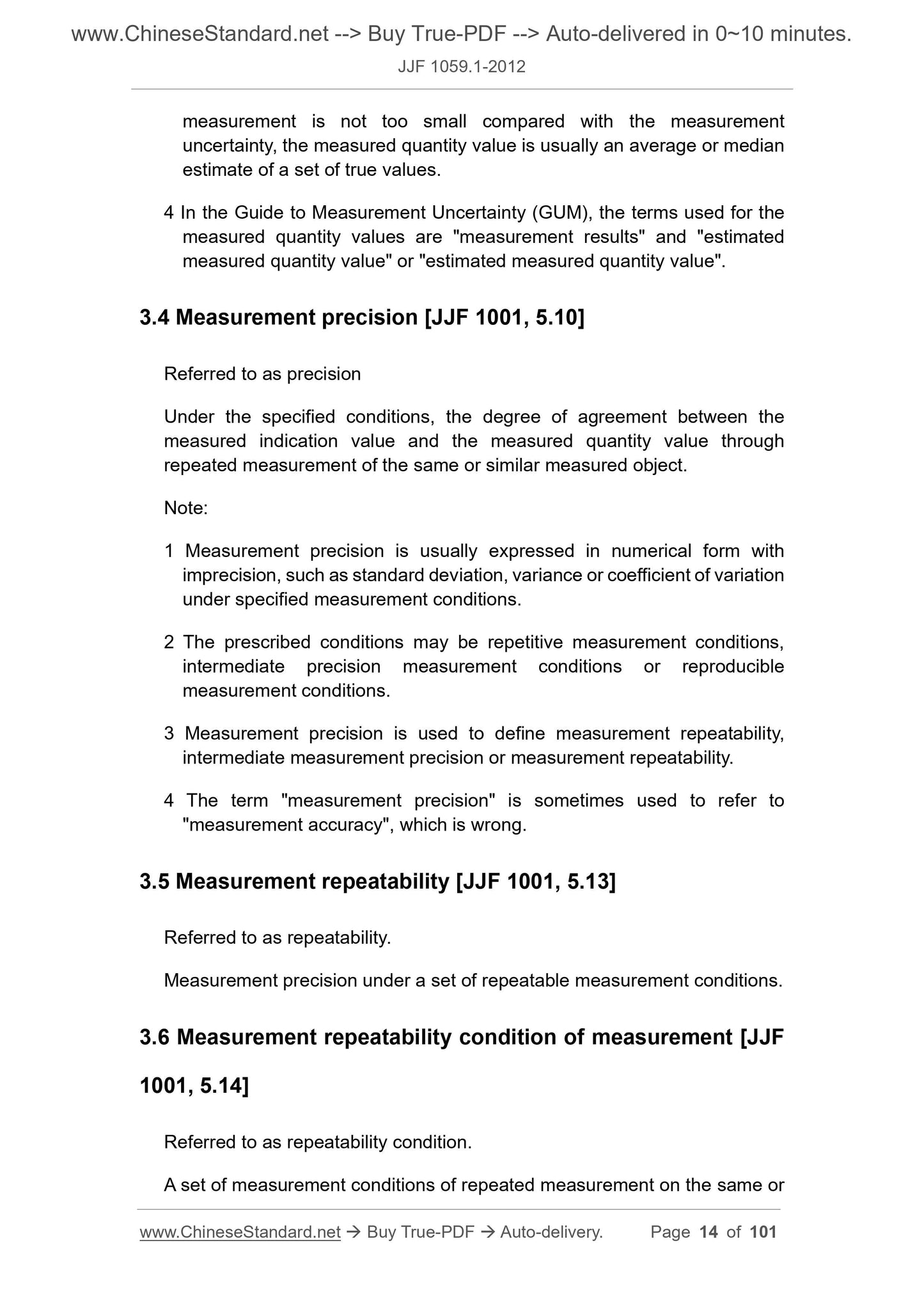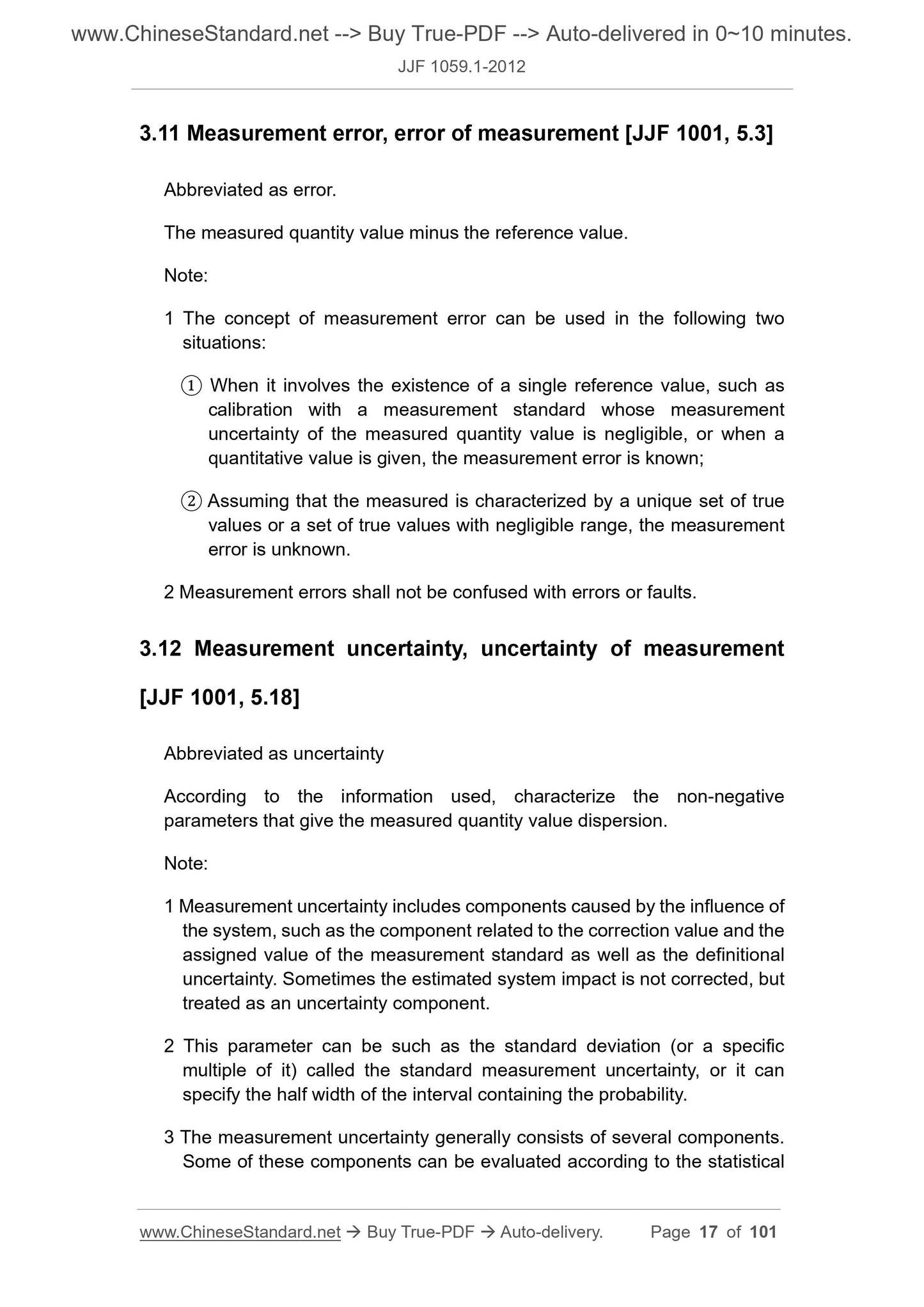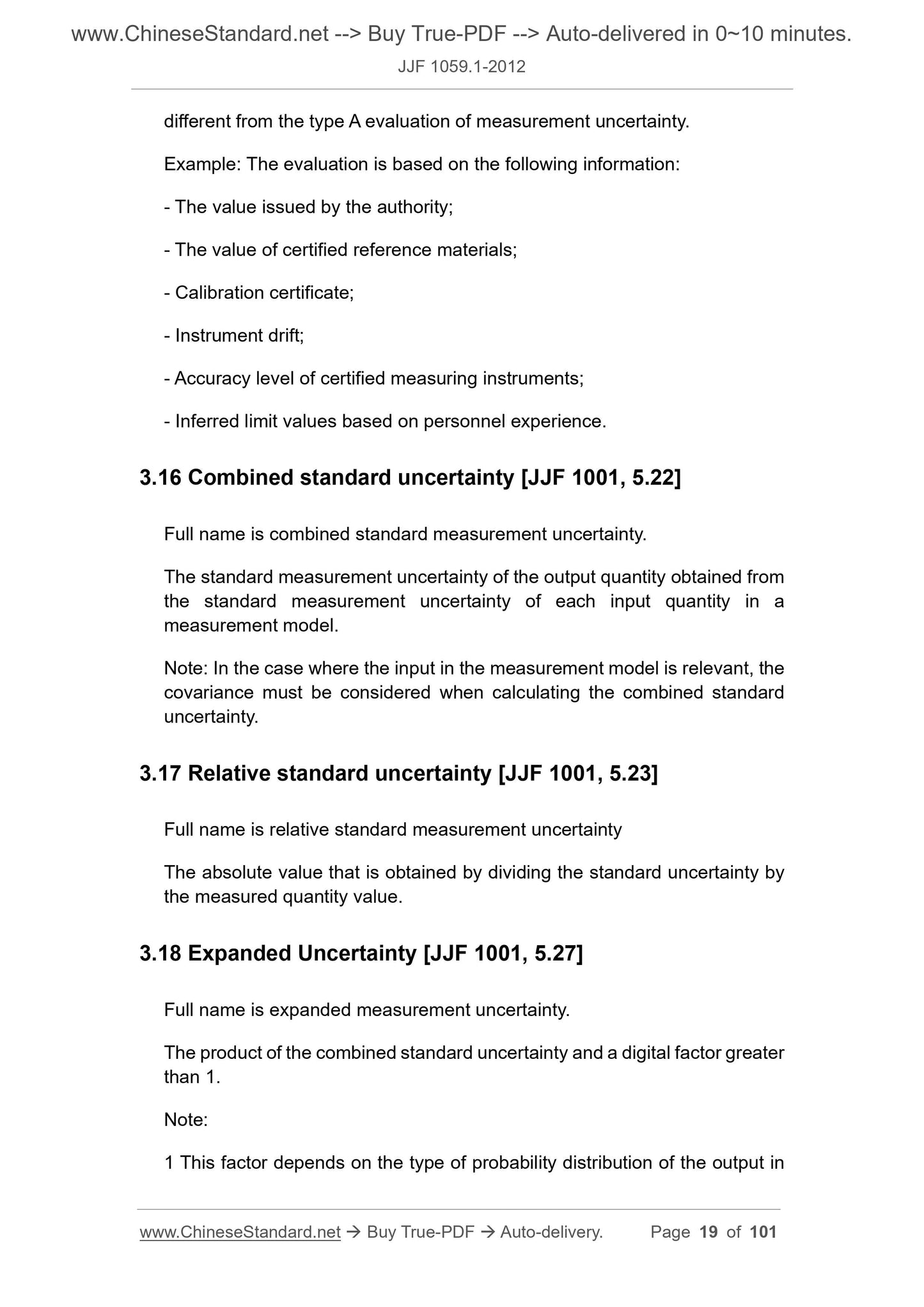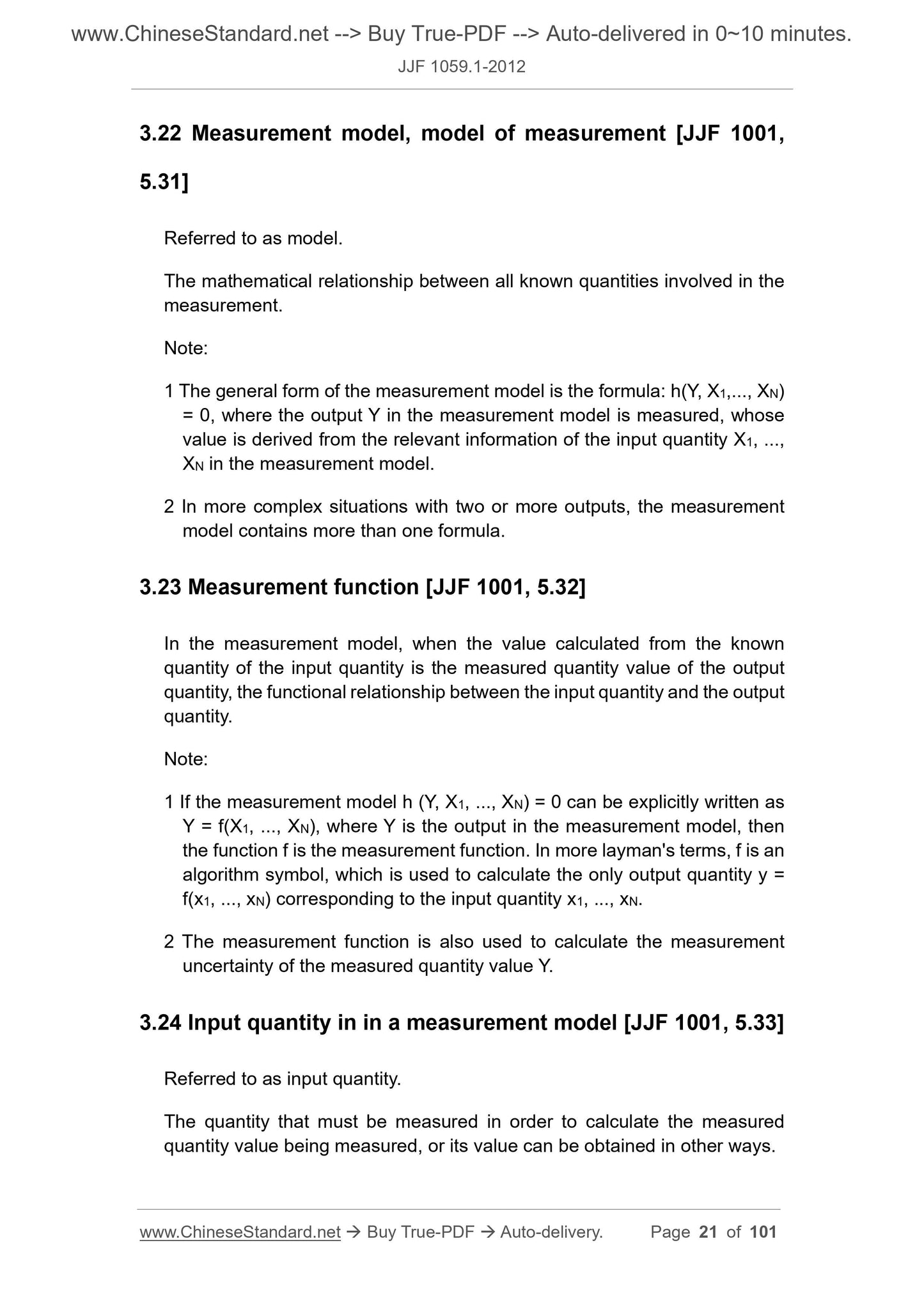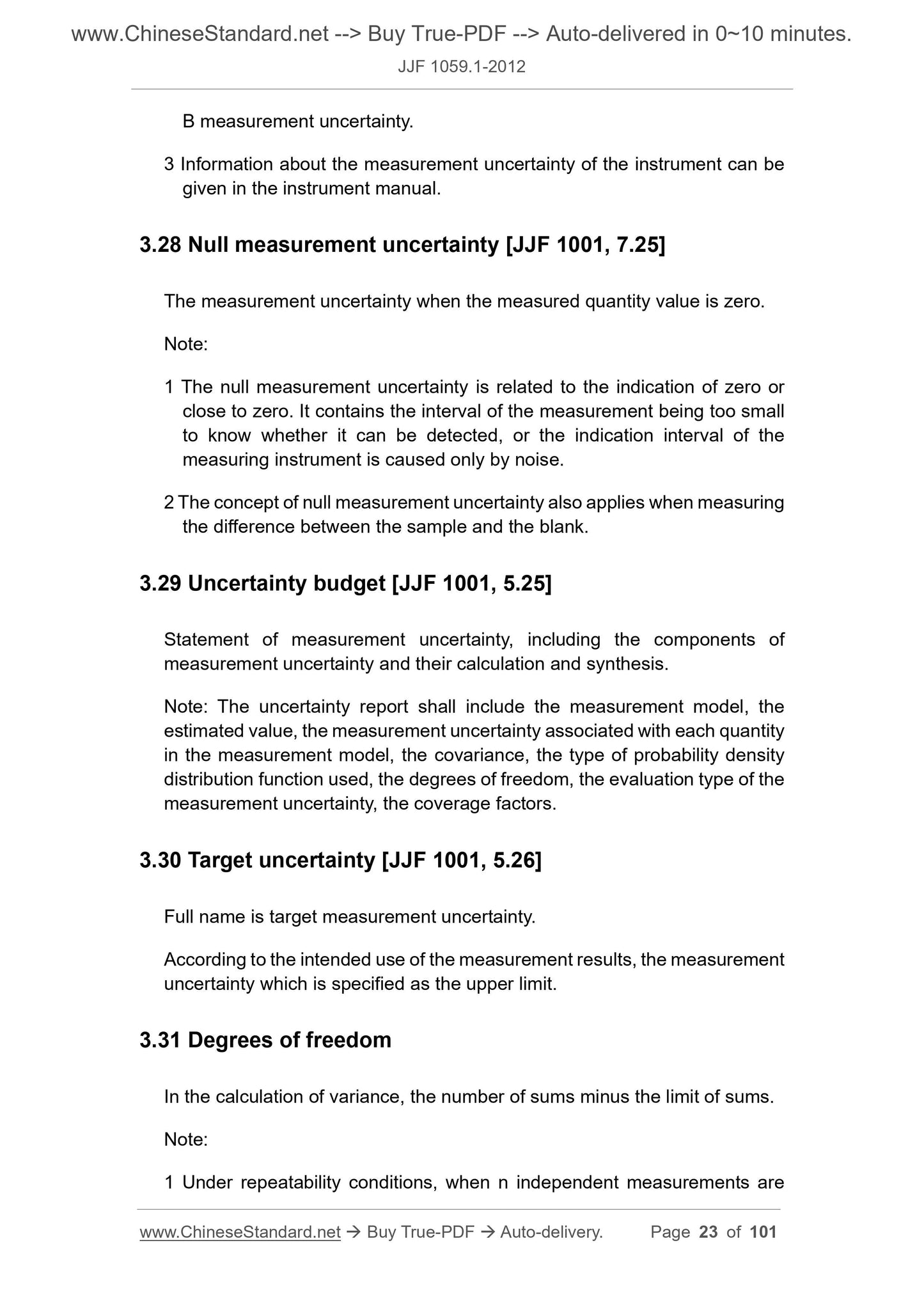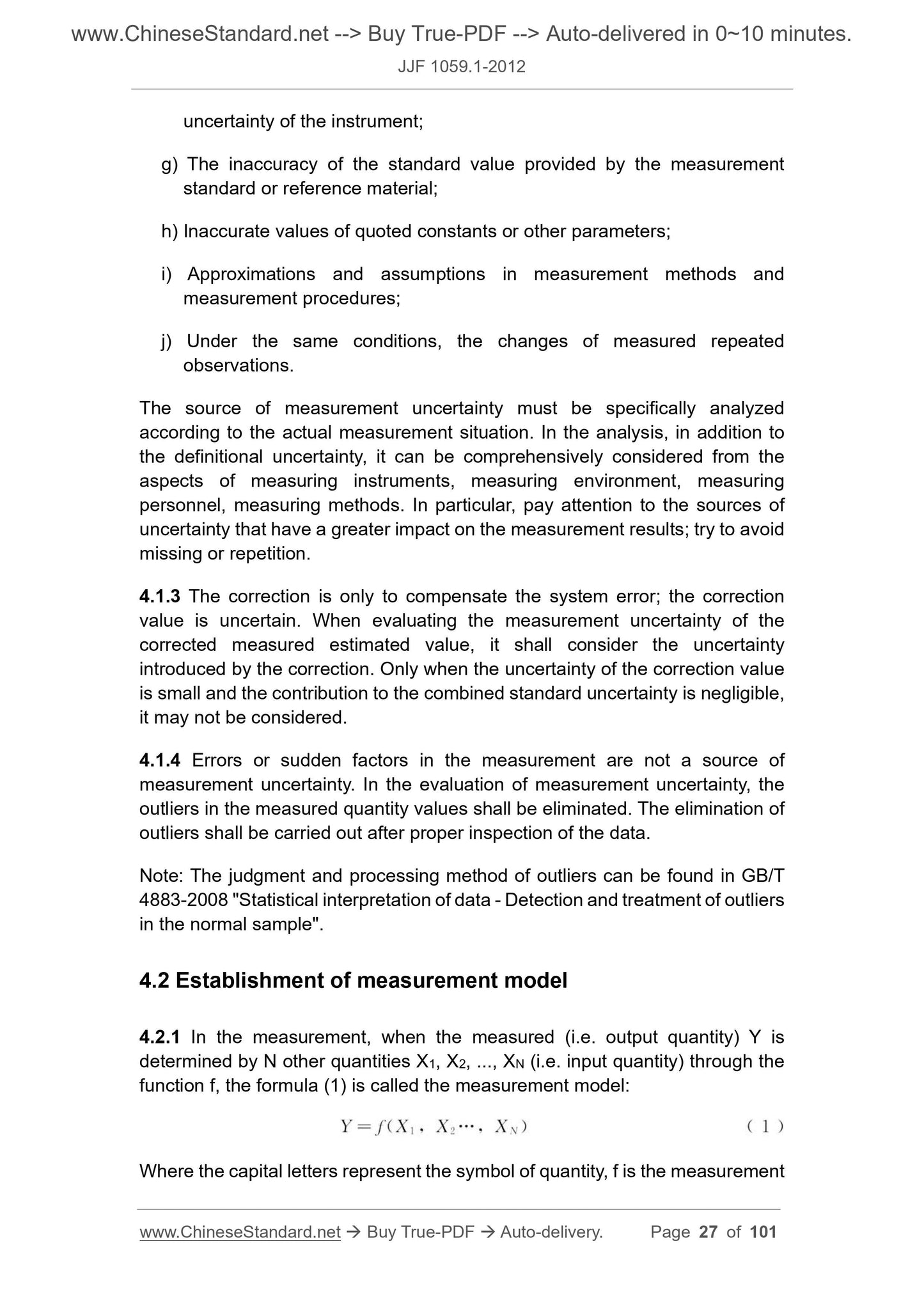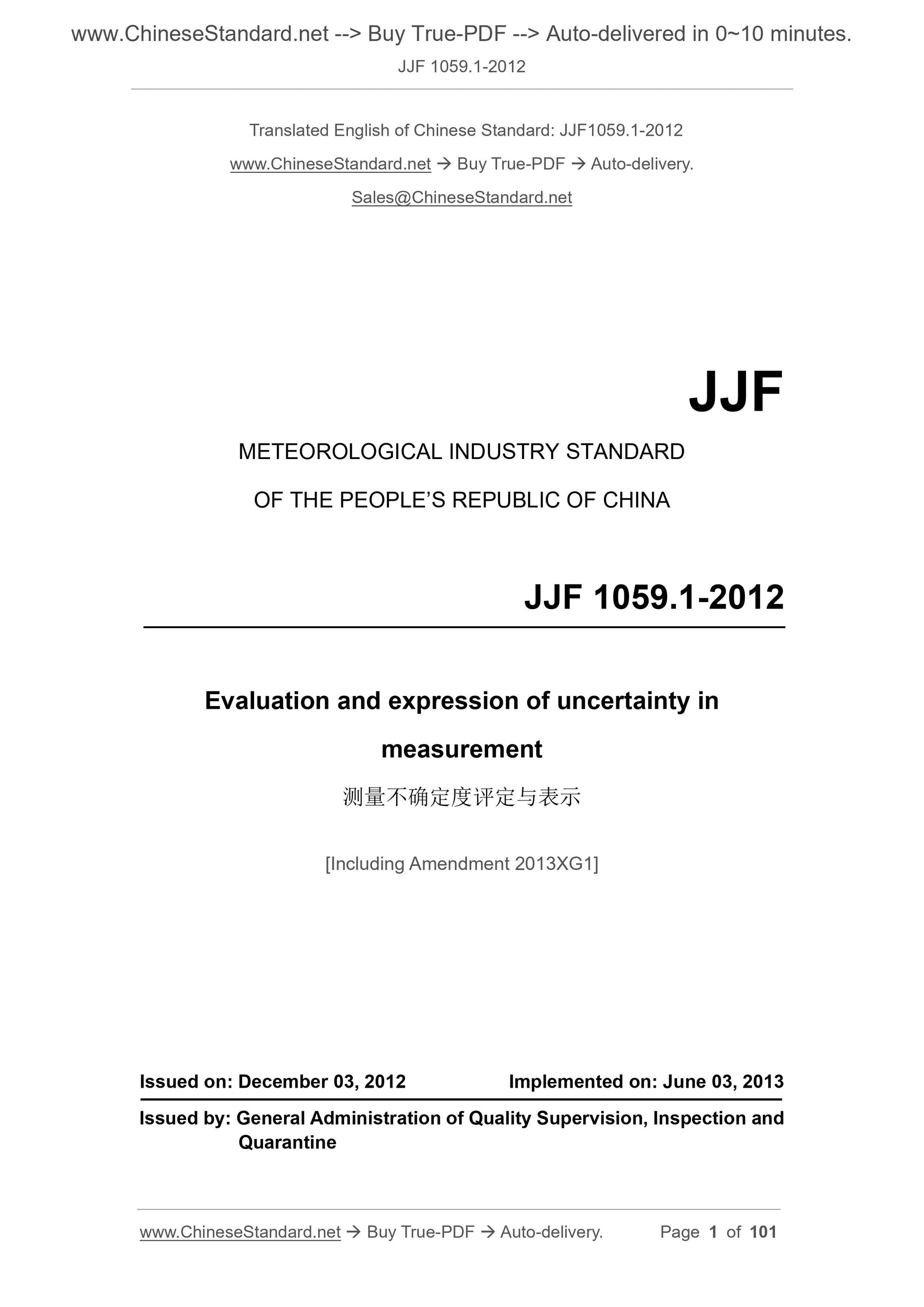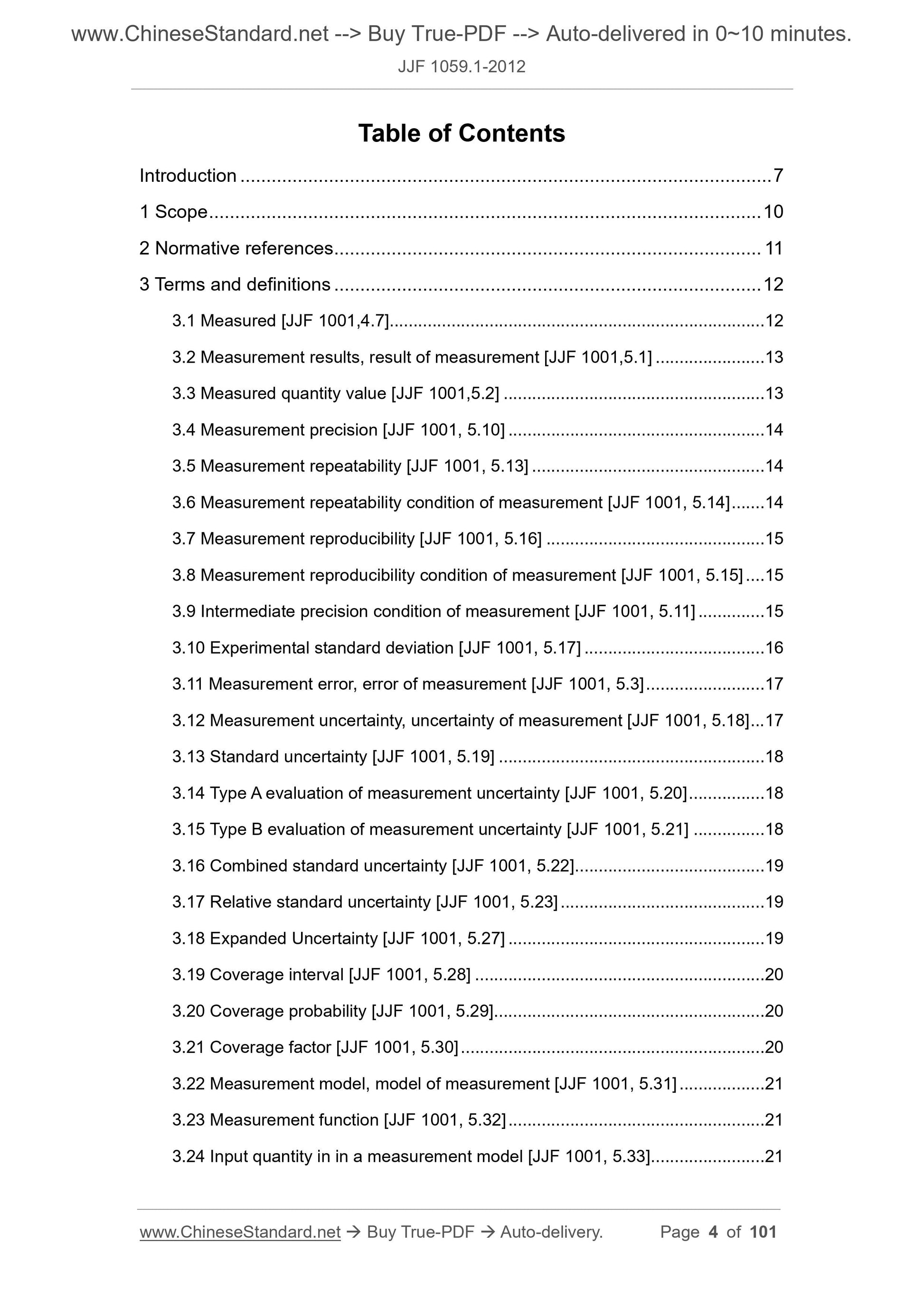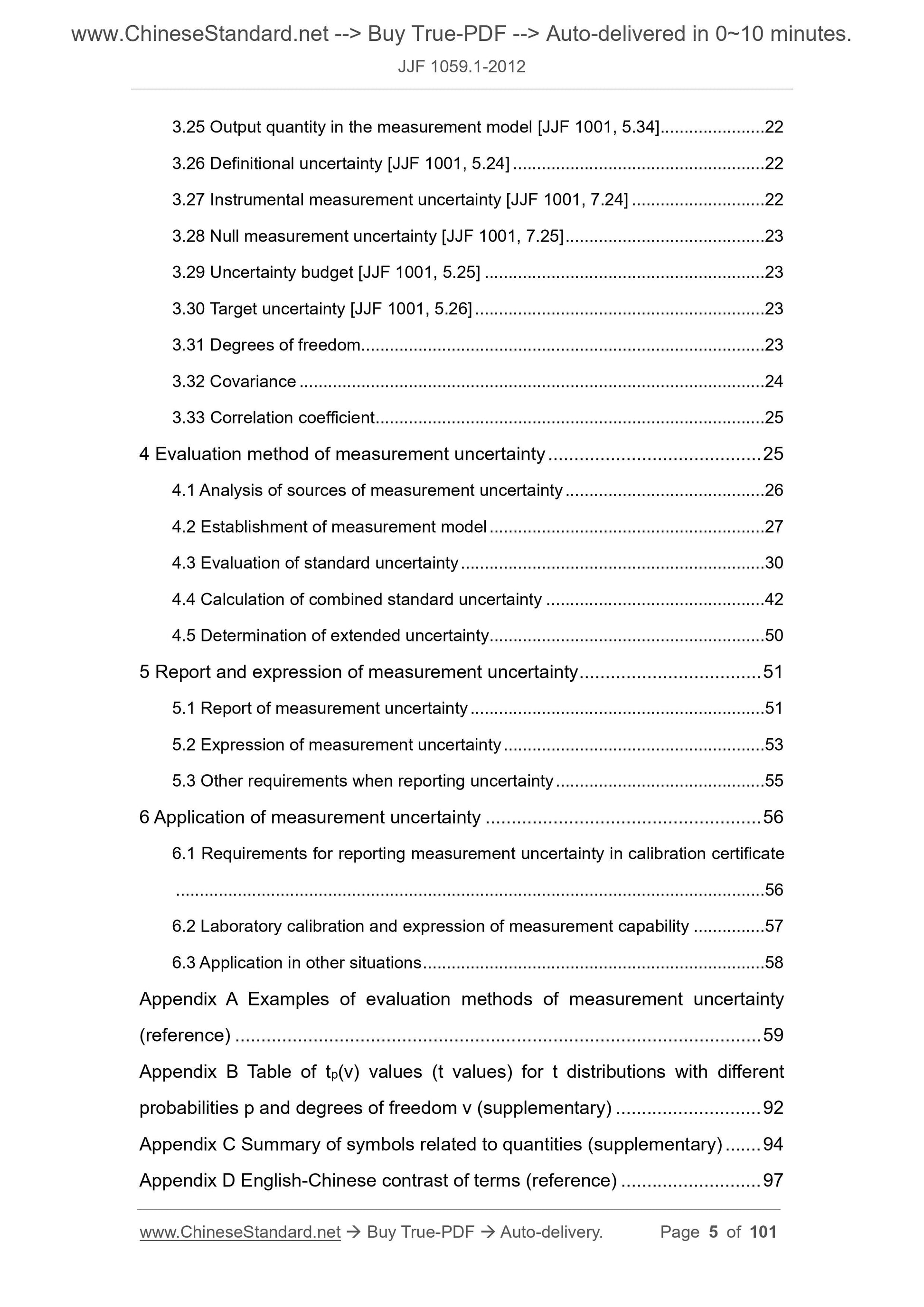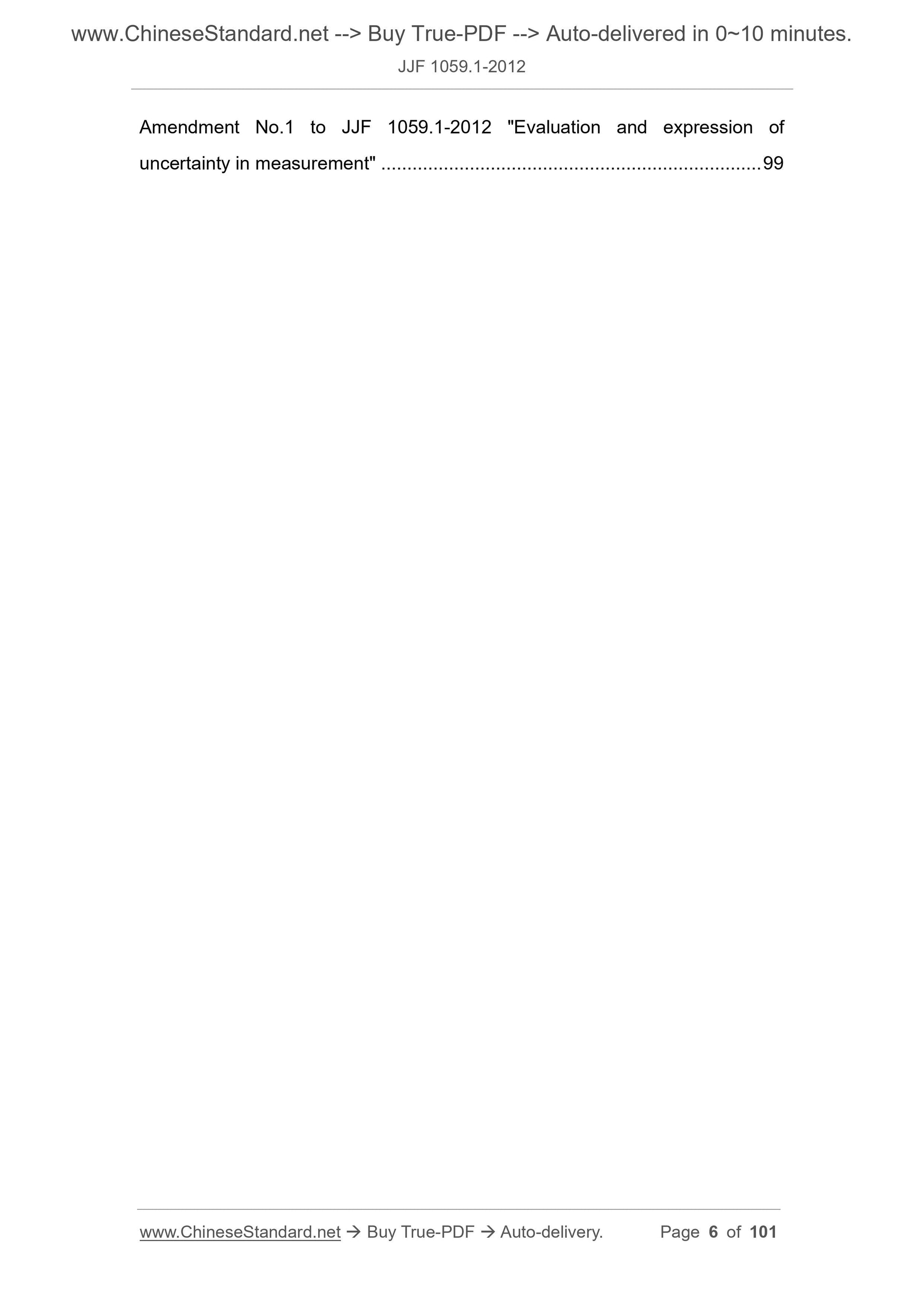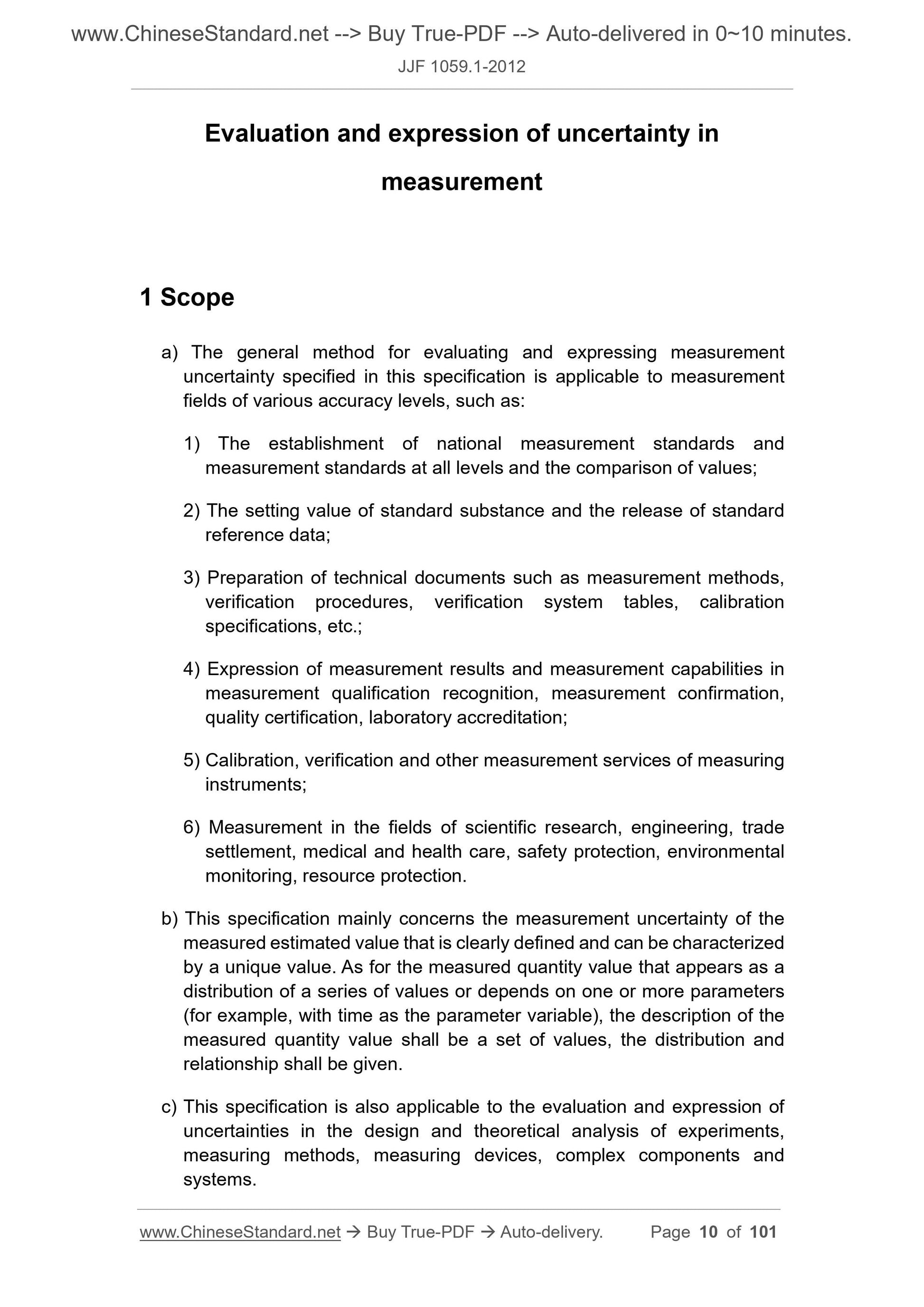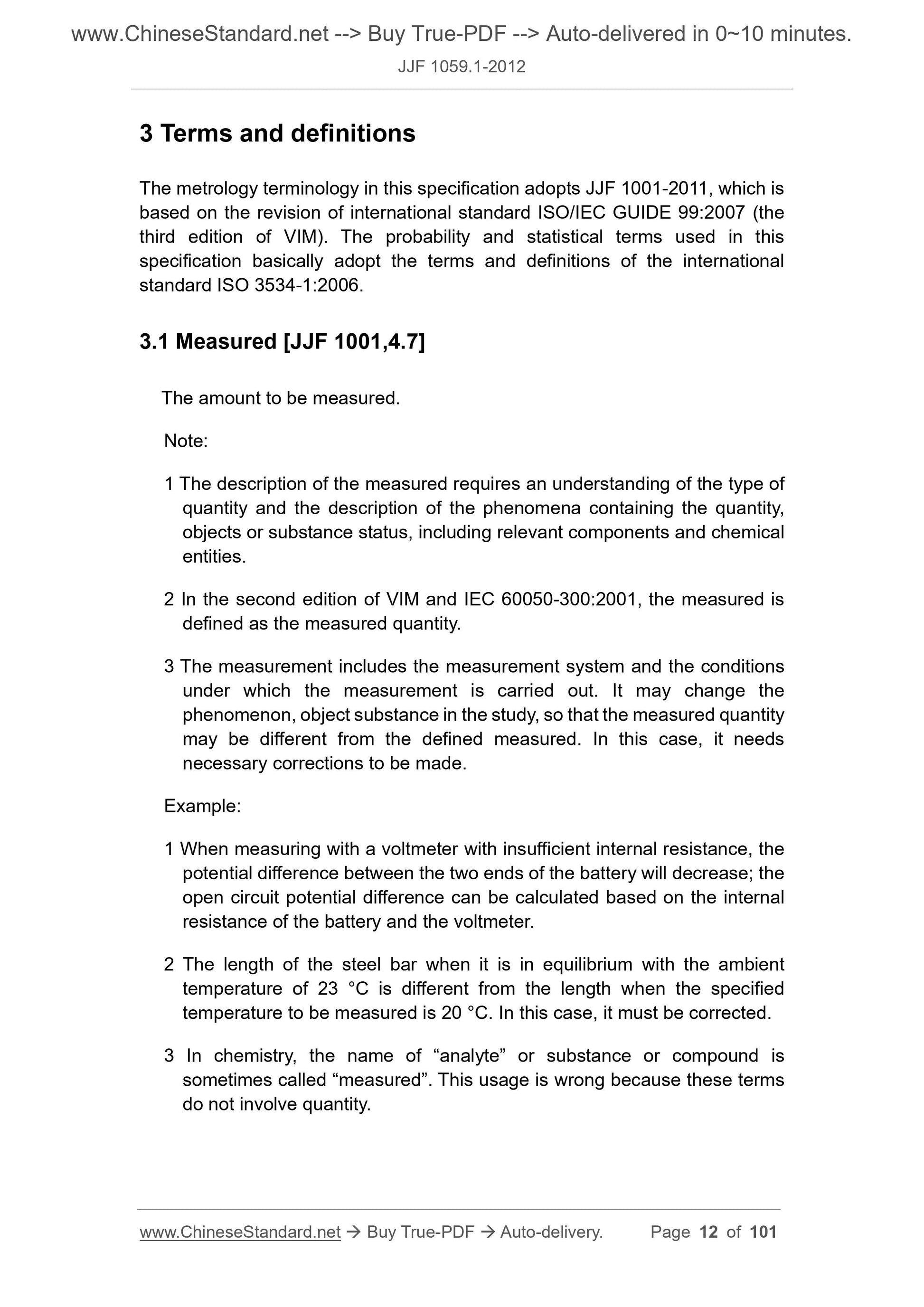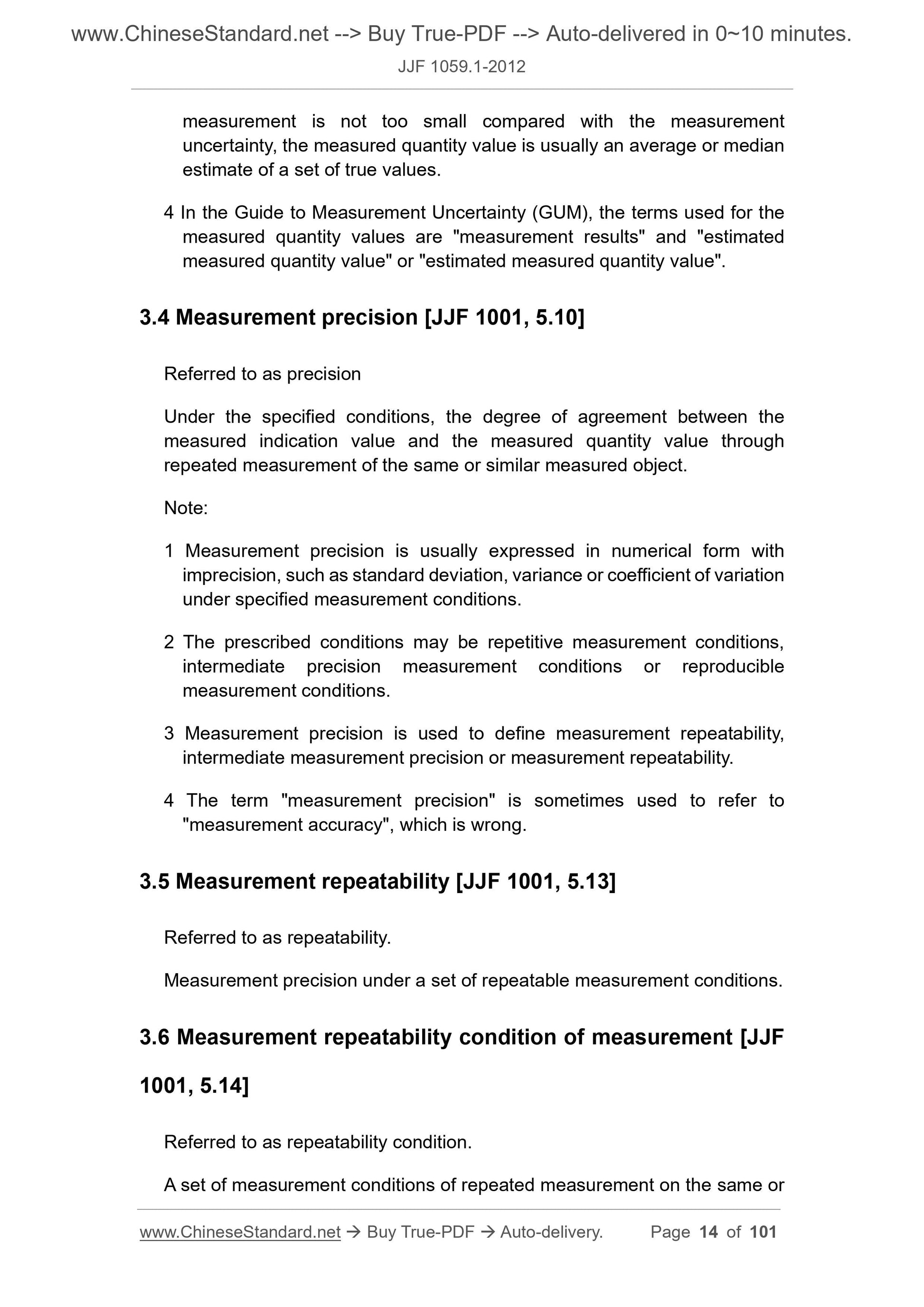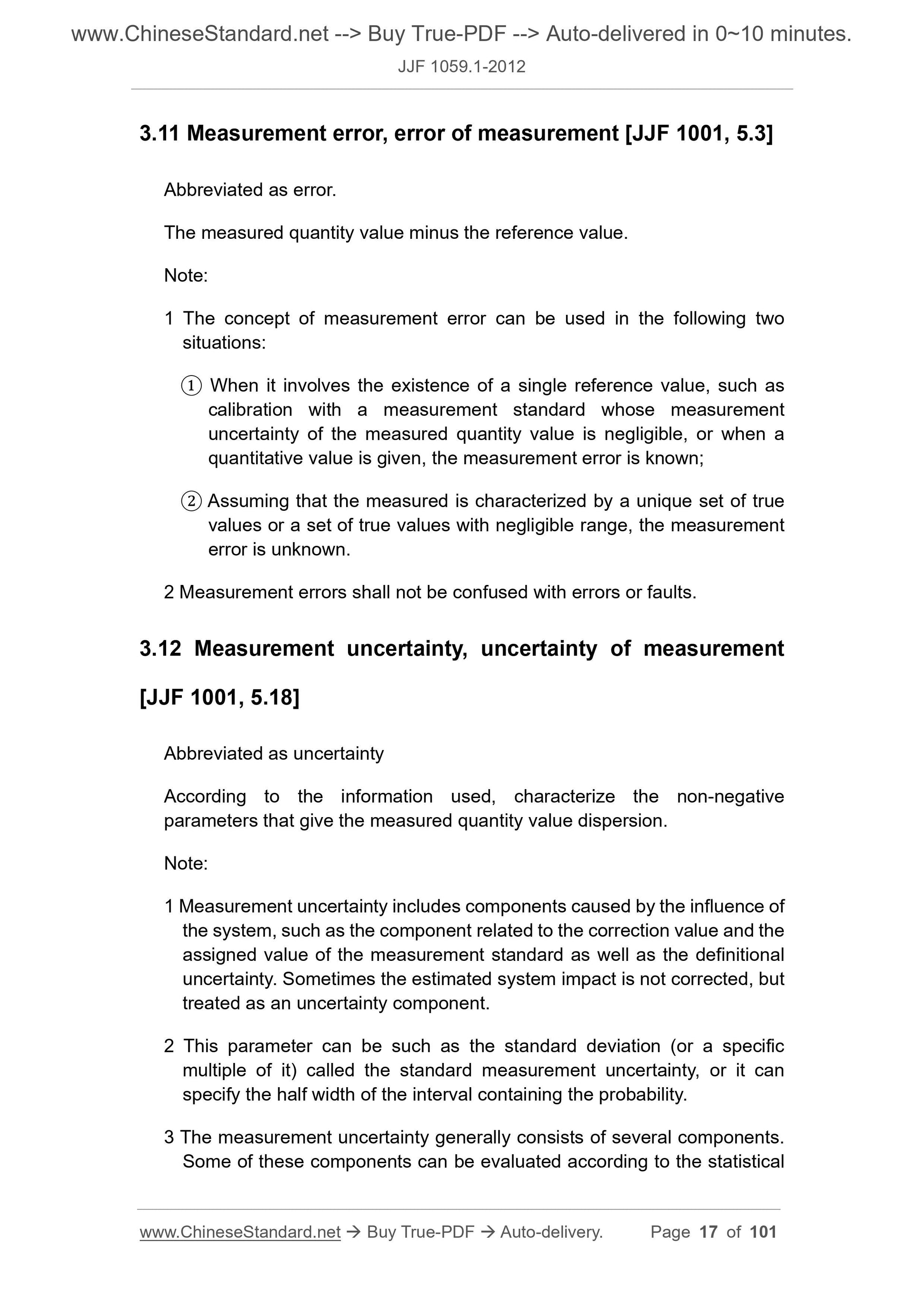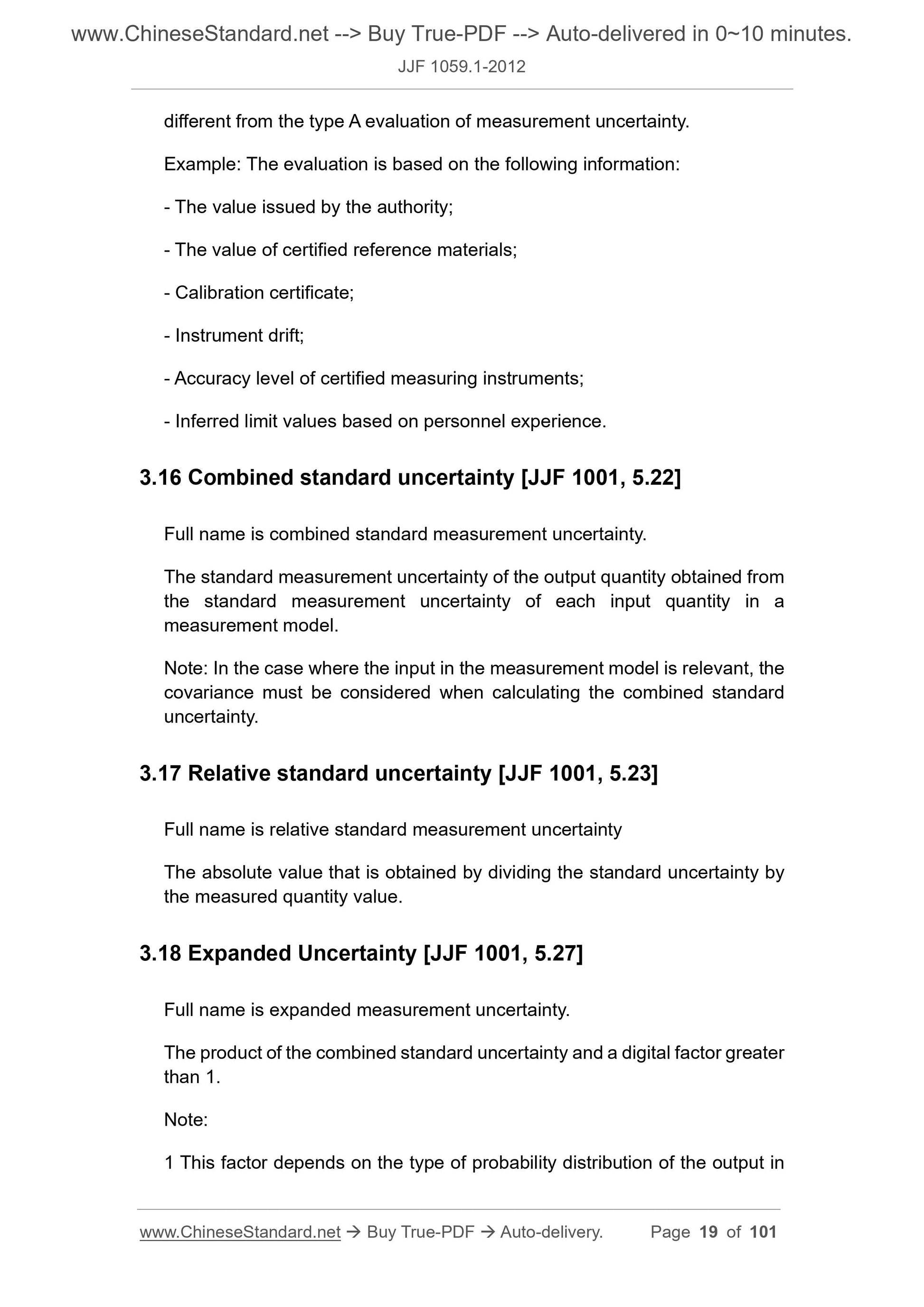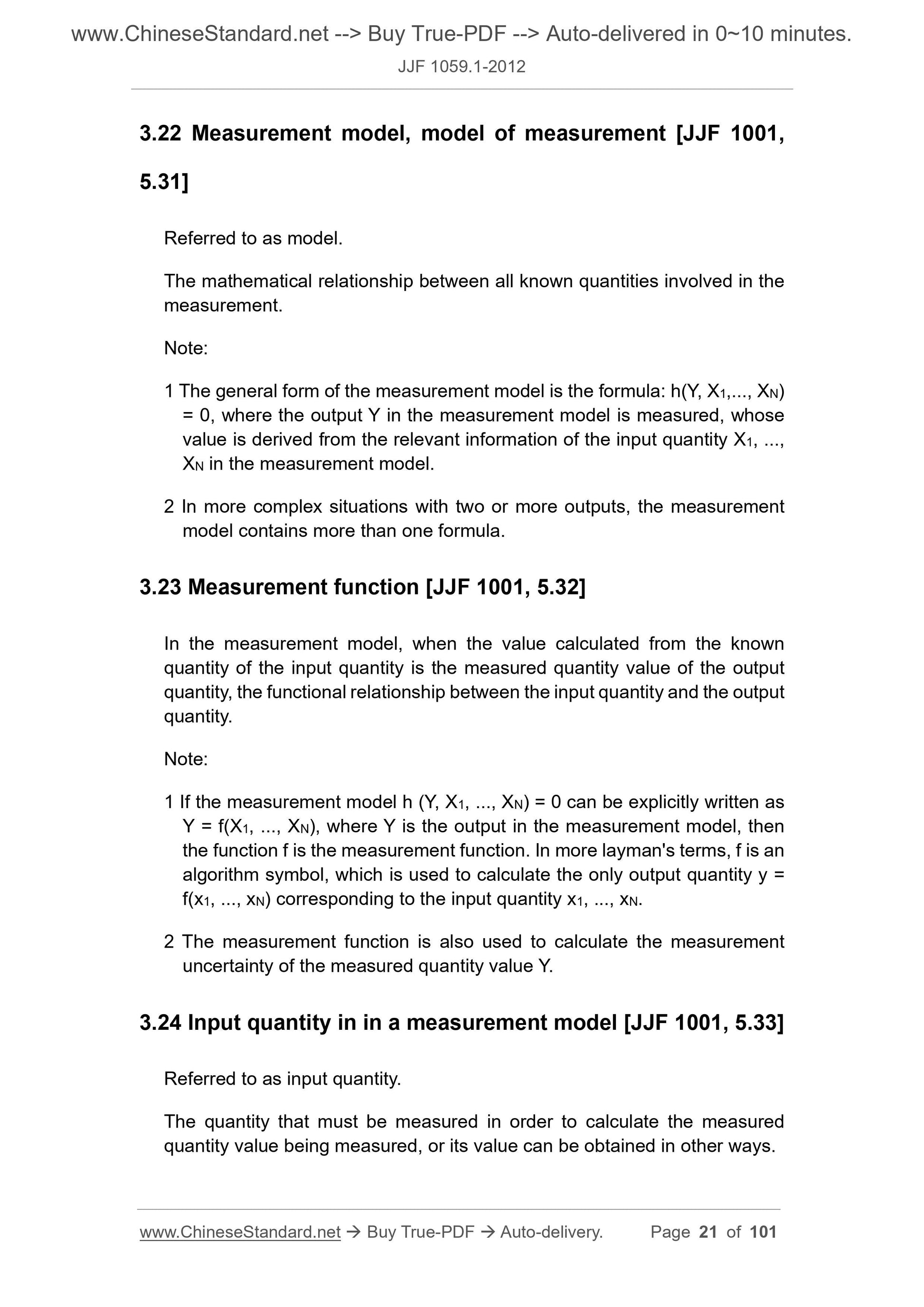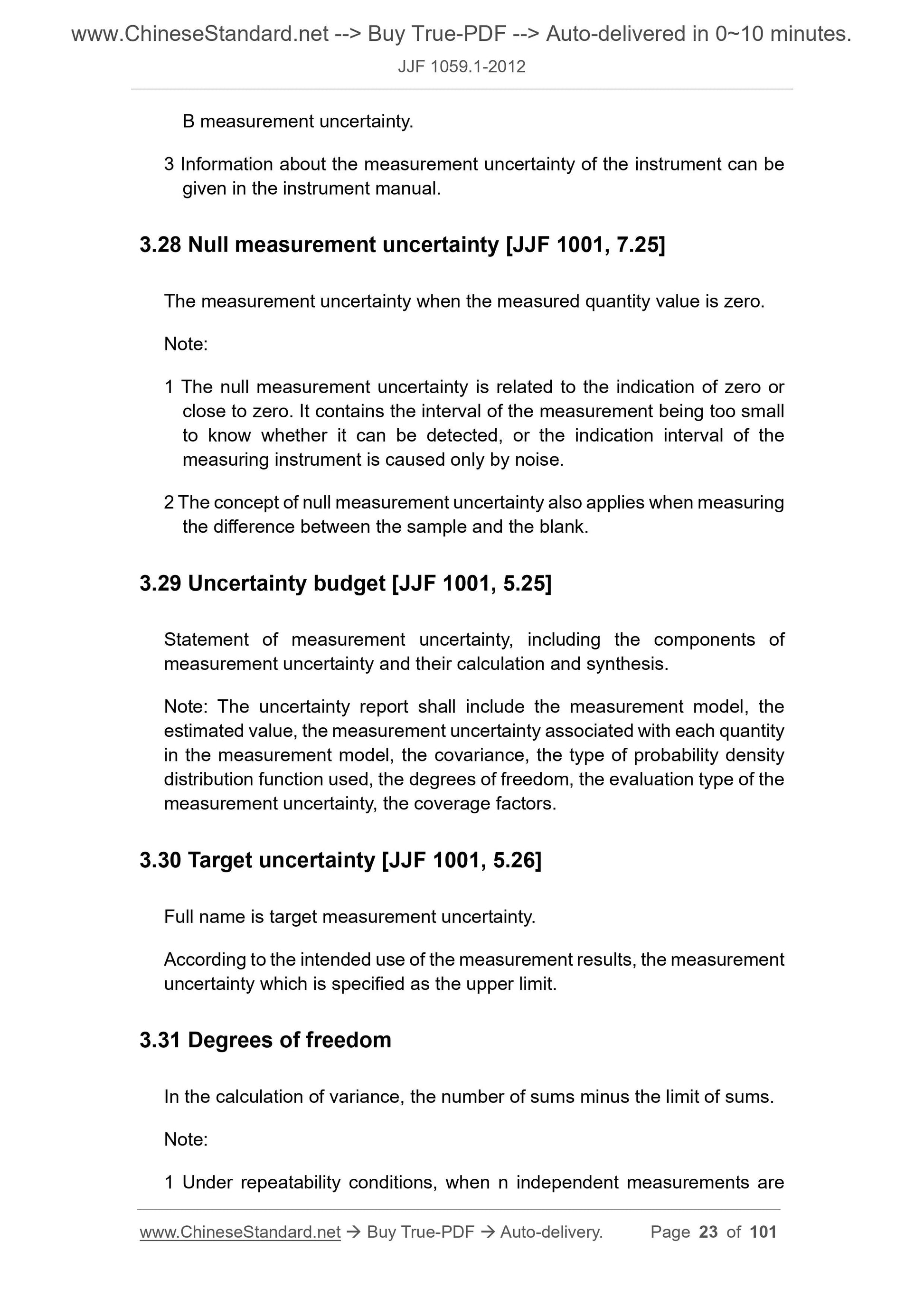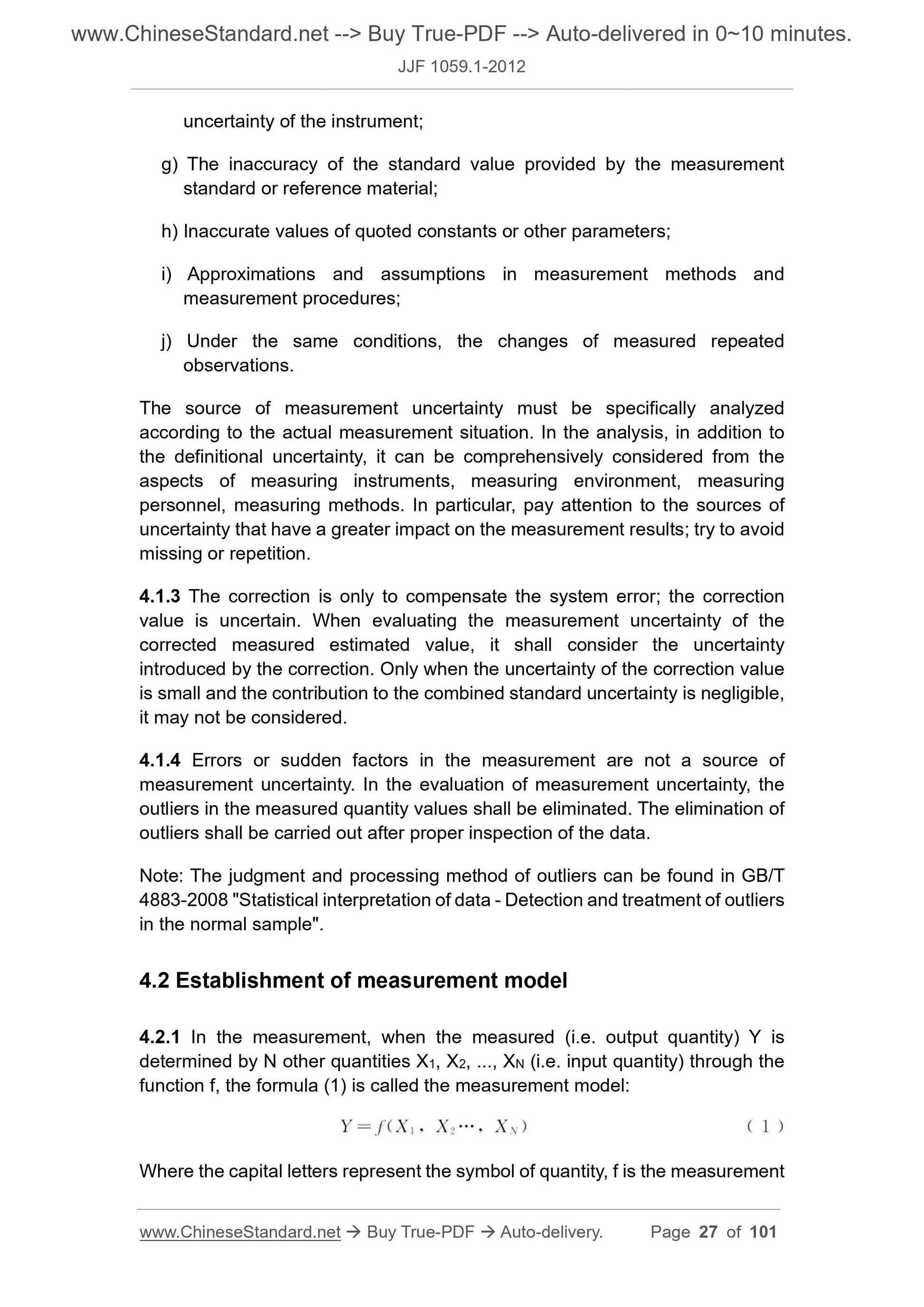1
/
of
12
www.ChineseStandard.us -- Field Test Asia Pte. Ltd.
JJF 1059.1-2012 English PDF
JJF 1059.1-2012 English PDF
Regular price
$745.00
Regular price
Sale price
$745.00
Unit price
/
per
Shipping calculated at checkout.
Couldn't load pickup availability
JJF 1059.1-2012: Evaluation and expression of uncertainty in measurement
Delivery: 9 seconds. Download (and Email) true-PDF + Invoice.Get Quotation: Click JJF 1059.1-2012 (Self-service in 1-minute)
Newer / historical versions: JJF 1059.1-2012
Preview True-PDF
Scope
a) The general method for evaluating and expressing measurementuncertainty specified in this specification is applicable to measurement
fields of various accuracy levels, such as.
1) The establishment of national measurement standards and
measurement standards at all levels and the comparison of values;
2) The setting value of standard substance and the release of standard
reference data;
3) Preparation of technical documents such as measurement methods,
verification procedures, verification system tables, calibration
specifications, etc.;
4) Expression of measurement results and measurement capabilities in
measurement qualification recognition, measurement confirmation,
quality certification, laboratory accreditation;
5) Calibration, verification and other measurement services of measuring
instruments;
6) Measurement in the fields of scientific research, engineering, trade
settlement, medical and health care, safety protection, environmental
monitoring, resource protection.
b) This specification mainly concerns the measurement uncertainty of the
measured estimated value that is clearly defined and can be characterized
by a unique value. As for the measured quantity value that appears as a
distribution of a series of values or depends on one or more parameters
(for example, with time as the parameter variable), the description of the
measured quantity value shall be a set of values, the distribution and
relationship shall be given.
c) This specification is also applicable to the evaluation and expression of
uncertainties in the design and theoretical analysis of experiments,
measuring methods, measuring devices, complex components and
systems.
d) This specification mainly applies to the following conditions.
1) It can be assumed that the probability distribution of the input is
symmetrically distributed;
2) It can be assumed that the probability distribution of the output is
approximately normal distribution or t distribution;
3) The measurement model is a linear model, a model that can be
converted into a linear model, or a model that can be approximated by
a linear model.
Basic Data
| Standard ID | JJF 1059.1-2012 (JJF1059.1-2012) |
| Description (Translated English) | Evaluation and expression of uncertainty in measurement |
| Sector / Industry | Metrology and Measurement Industry Standard |
| Classification of Chinese Standard | A50 |
| Classification of International Standard | 17.020 |
| Word Count Estimation | 64,651 |
| Older Standard (superseded by this standard) | JJF 1059-1999 |
| Quoted Standard | JJF 1001-2011; GB/T 70-2008; GB 3101-1993; ISO/IEC GUIDE 98-3-2008; ISO 3534-1-2006; GB/T 4883-2008 |
| Regulation (derived from) | New version of " Evaluation and Expression of Uncertainty in Measurement Technical specifications" released; AQSIQ Announcement No. 199 of 2012 |
| Issuing agency(ies) | General Administration of Quality Supervision, Inspection and Quarantine |
| Summary | This standard applies to the level of accuracy of measurement of various fields. Required by this specification Evaluation and Expression of Uncertainty in Measurement general method, for example: a) Basis of measurement and at all levels of national meas |
Share
